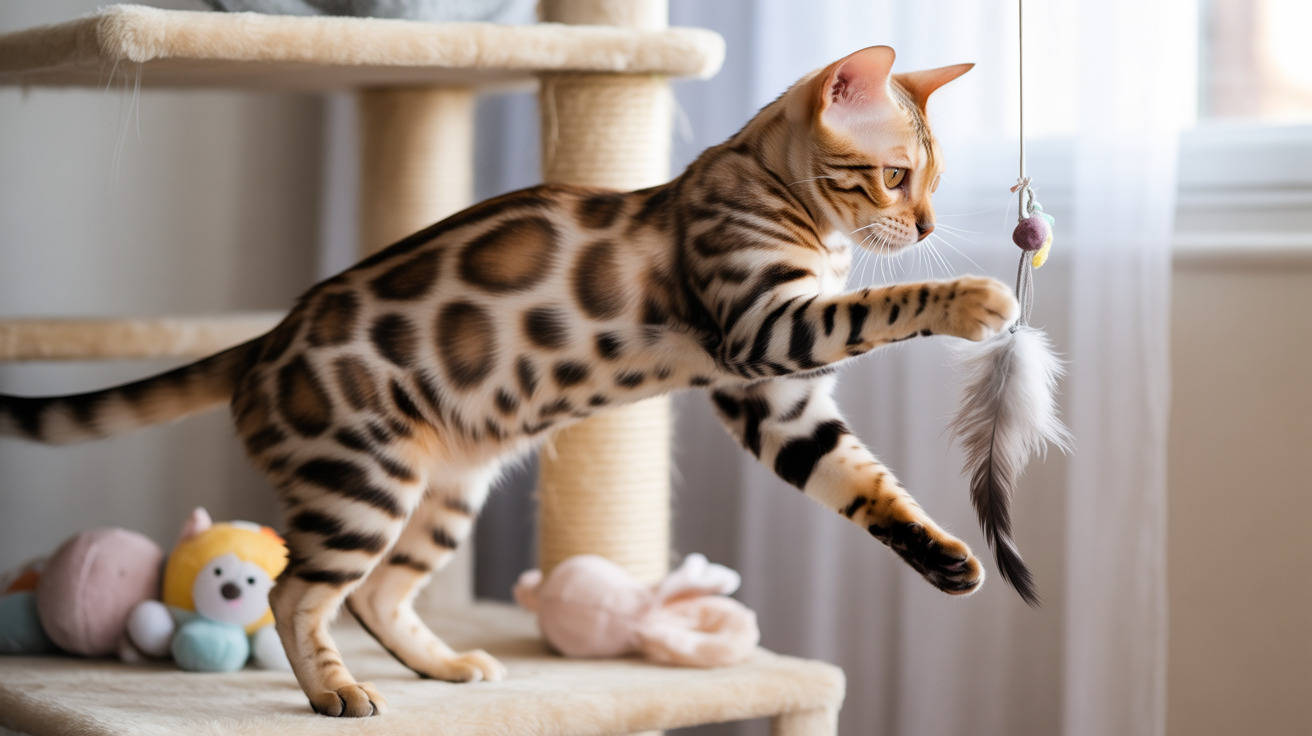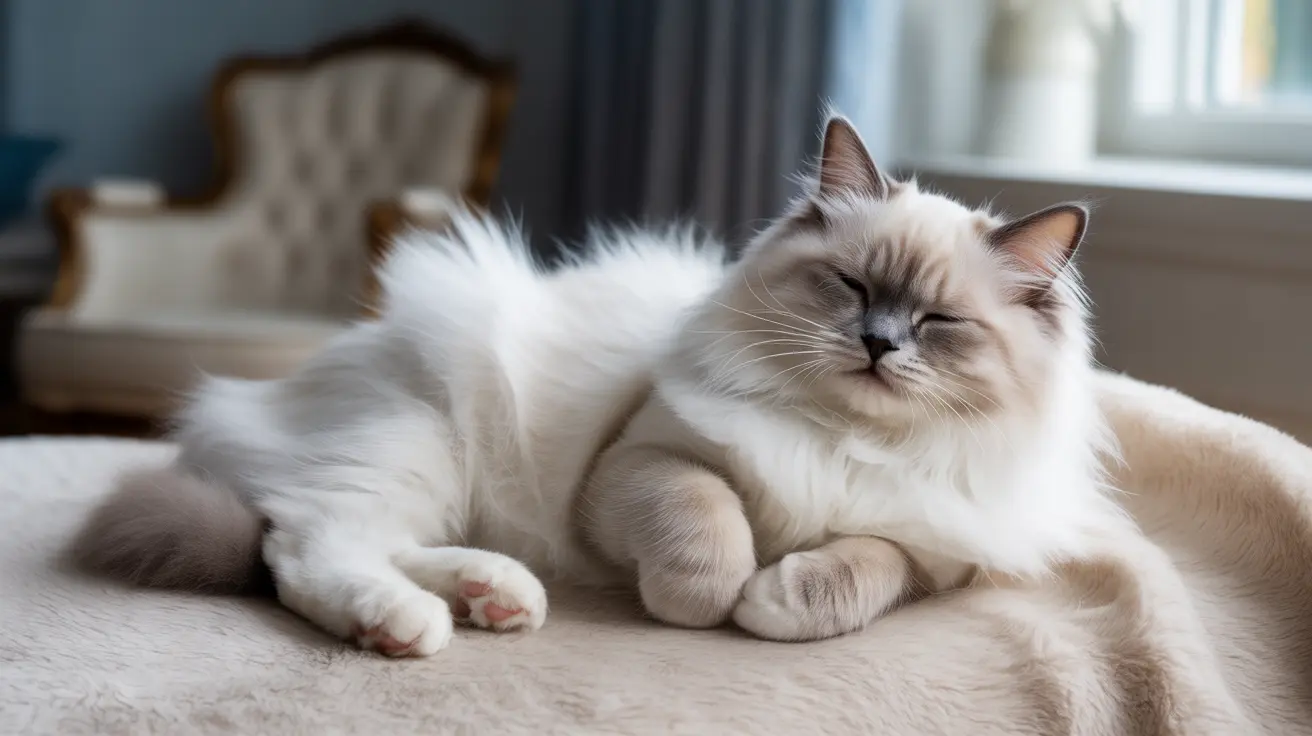Origins and History: From Kenyan Forest to Global Recognition
The Sokoke cat's journey from the wild forests of Kenya to recognition as an official breed is a remarkable story of conservation and careful breeding. Originally discovered by British farmer Jeni Slater in 1978 on her family's coconut plantation in Watamu, Kenya, these cats were initially known by the local name "khadzonzo." The breed naturally developed from feral cats native to the Arabuko-Sokoke forest area, making them a truly natural breed rather than a result of hybridization with wildcats.
The breed's development took a significant turn when Slater began hand-rearing kittens and later collaborated with Danish breeders to establish the Sokoke outside of Kenya. This careful breeding program led to official recognition by the Fédération Internationale Féline (FIFe) in 1993, followed by recognition from other major cat registries including GCCF, TICA, and the Canadian Cat Association. Despite this recognition, the Sokoke remains one of the rarest domestic cats worldwide, contributing to their exceptional status among cat enthusiasts.
Physical Characteristics: Nature's Perfect Camouflage
Distinctive Coat Pattern and Colors
The Sokoke's most striking feature is undoubtedly their unique coat pattern, which resembles tree bark and provides natural camouflage reminiscent of their forest origins. Their short, close-lying glossy coat features a distinctive ticked tabby or modified classic tabby pattern that creates a remarkable "wood grain" or "African tabby" appearance. This pattern includes widely spaced ticking and blotched tabby markings that can form large rosette spots, extending even to the tail tip.
The breed comes in two main variants: the traditional brown tabby and the rarer snow Sokoke. The brown tabby displays rich colors ranging from golden to dark brown, while the snow variant features a paler body with darker markings restricted to specific points. The coat itself has very little to no undercoat, resulting in fur that is short and coarse yet lustrous to the touch.
Body Structure and Physical Features
Sokoke cats possess a lean, athletic build that reflects their active nature and forest heritage. Weighing between 5 to 10 pounds, they feature a long, slender, and muscular body with a rounded rib cage and level back. Their legs are notably long and fine-boned, with longer hind legs contributing to their characteristic tip-toe gait that sets them apart from other breeds.
The breed's head presents a modified wedge shape that appears small compared to their body, topped with large, upright ears that showcase their alert nature. Their almond-shaped eyes range in color from greenish amber to blue in the snow variant, reflecting their intelligence and attentiveness. Additional distinctive features include high cheekbones, a broad nose, gently rounded whisker pads, and a strong chin, all contributing to their wild yet refined appearance.
Sokoke Cat Breed Care and Personality: Understanding Their Unique Nature
Intelligence and Behavioral Traits
The Sokoke cat's personality is perhaps their most captivating characteristic, combining high intelligence with dog-like behaviors that make them exceptional companions. These cats demonstrate remarkable problem-solving abilities and form incredibly strong, affectionate bonds with their human families. Their intelligence manifests in their ability to learn routines quickly, respond to their names, and even engage in interactive games that challenge their mental capabilities.
Their curious and active nature means they're constantly exploring their environment and seeking new experiences. Sokoke cats are known for their playful demeanor throughout their lives, maintaining kitten-like enthusiasm well into adulthood. This breed particularly enjoys climbing and engaging in interactive play, making them ideal companions for families who can provide adequate mental and physical stimulation.
Social Behavior and Family Integration
Despite their wild appearance, Sokoke cats are remarkably social and adaptable creatures. They typically greet visitors with curiosity rather than fear, demonstrating their confident and outgoing personalities. When properly introduced, they get along exceptionally well with children, dogs, and other cats, making them excellent additions to multi-pet households.
However, their strong hunting instincts mean they may be less tolerant of smaller pets such as birds, hamsters, or other small animals. This natural behavior stems from their forest origins and should be considered when planning household dynamics. Their social nature also means they don't thrive when left alone for extended periods, as they genuinely enjoy human companionship and interaction.
Daily Care Requirements for Sokoke Cats
Grooming and Maintenance Needs
One of the advantages of owning a Sokoke cat is their relatively low-maintenance grooming requirements. Their short, glossy coat with minimal undercoat means they require only weekly brushing to maintain their lustrous appearance and remove loose hairs. This simple grooming routine not only keeps their coat healthy but also provides an excellent bonding opportunity between cat and owner.
Beyond coat care, Sokoke cats benefit from regular nail trims, ear cleaning, and dental care, much like any domestic cat. Their active nature means they may naturally wear down their claws through climbing and play, but regular trimming ensures they don't become overly sharp or cause damage to furniture or family members during enthusiastic play sessions.
Diet and Nutrition Considerations
As an athletic and active breed, Sokoke cats require a high-quality diet that supports their energy levels and muscular build. Their natural activity level means they typically have healthy appetites and efficient metabolisms. Providing a balanced diet rich in protein helps maintain their lean muscle mass and supports their active lifestyle.
Fresh water should always be available, and feeding schedules should accommodate their active periods throughout the day. Many Sokoke owners find that interactive feeding methods, such as puzzle feeders or food-dispensing toys, not only provide nutrition but also offer the mental stimulation these intelligent cats crave.
Environmental Enrichment and Exercise
Due to their exceptional intelligence and active nature, Sokoke cats require consistent mental and physical stimulation to prevent boredom and behavioral issues. Their natural climbing abilities make cat trees and vertical spaces essential elements of their environment. Providing multiple levels for exploration, hiding spots, and perching areas satisfies their instinctual needs while keeping them physically active.
Interactive toys, puzzle feeders, and regular play sessions help channel their energy constructively. Their dog-like personality means they often enjoy games of fetch and can be trained to walk on leashes, providing additional exercise opportunities for indoor cats or those in controlled outdoor environments.
Health Considerations and Lifespan
One of the most appealing aspects of the Sokoke breed is their robust health and lack of widely known breed-specific hereditary health issues. As a naturally developed breed adapted to harsh environments, they demonstrate remarkable resilience and typically enjoy lifespans of 12 to 20 years when properly cared for.
However, being a warm climate breed originally from Kenya, Sokoke cats prefer warmer environments, though they can successfully acclimate to moderate colder climates with proper care. They may have limited resistance to some common infectious diseases found in multi-cat settings, making regular veterinary checkups and vaccinations particularly important for maintaining their health.
Their athletic nature and active lifestyle contribute significantly to their overall health and longevity. Regular exercise through play and environmental enrichment helps maintain their physical condition and mental well-being throughout their lives.
Acquiring a Sokoke Cat: What Prospective Owners Need to Know
Understanding Rarity and Authenticity
The extreme rarity of Sokoke cats means that prospective owners must exercise particular caution when seeking to add one to their family. With only approximately 100 individuals estimated worldwide, finding a legitimate Sokoke requires patience and careful research. Reputable breeders will be able to provide documentation of their cats' lineage and breeding history.
Due to their rarity, Sokoke cats are primarily bred in Europe, North America, and parts of Kenya. Prospective owners should prioritize working with breeders who are recognized by major cat registries and who demonstrate a commitment to the breed's health and welfare rather than profit alone.
Compatibility Assessment
Before bringing a Sokoke cat home, it's essential to honestly assess whether your lifestyle and household can meet their unique needs. These cats thrive in environments where they receive plenty of attention, mental stimulation, and opportunities for physical activity. Families who travel frequently or have limited time for interactive play may find that other, less demanding breeds better suit their circumstances.
Their social nature and intelligence make them ideal for families with children or other pets, but their activity level and need for stimulation mean they're best suited to households prepared for an engaged, interactive pet rather than a low-maintenance companion.
Frequently Asked Questions
- What makes the Sokoke cat's coat pattern so unique?
The Sokoke's coat features a distinctive ticked tabby or modified classic tabby pattern that resembles tree bark, providing natural camouflage. This "wood grain" or "African tabby" appearance includes widely spaced ticking and blotched markings that can form large rosette spots, creating a truly unique look that extends even to their tail tip.
- How active are Sokoke cats compared to other breeds?
Sokoke cats are exceptionally active and require consistent mental and physical stimulation. They are naturally curious, enjoy climbing, and engage in interactive play throughout their lives. Their dog-like behavior and high intelligence mean they need more engagement than typical house cats to prevent boredom.
- Are Sokoke cats suitable for first-time cat owners?
While Sokoke cats are affectionate and social, their high intelligence and activity requirements may be challenging for first-time owners. They need consistent mental stimulation and interactive play, making them better suited for experienced cat owners or families prepared to invest significant time in engaging with their pet.
- What health issues should I watch for in Sokoke cats?
Sokoke cats are remarkably healthy with no widely known breed-specific hereditary health issues. However, they may have limited resistance to common infectious diseases in multi-cat settings, making regular veterinary checkups and vaccinations important. Their robust nature contributes to lifespans of 12-20 years.
- How do Sokoke cats get along with other pets?
When properly introduced, Sokoke cats adapt well to households with children, dogs, and other cats. However, their strong hunting instincts may make them less tolerant of smaller pets like birds or hamsters. Early socialization helps ensure successful integration with other household animals.
- What type of environment do Sokoke cats prefer?
Being originally from Kenya's warm climate, Sokoke cats prefer warmer environments but can acclimate to moderate colder climates. They thrive with plenty of vertical spaces for climbing, interactive toys, and opportunities for mental stimulation. Indoor environments with proper enrichment suit them well.
- How rare are Sokoke cats, and where can I find one?
Sokoke cats are among the world's rarest breeds, with only about 100 individuals estimated globally. They are primarily bred in Europe, North America, and parts of Kenya. Prospective owners should work with reputable breeders recognized by major cat registries and prioritize adoption from rescue organizations when possible.
Conclusion
The Sokoke cat represents a truly remarkable blend of wild beauty and domestic companionship, offering cat enthusiasts the opportunity to share their homes with one of nature's most extraordinary creations. Their unique combination of intelligence, athleticism, and affectionate personality makes them exceptional companions for the right families. Understanding Sokoke cat breed care and personality requirements is essential for providing these rare cats with the environment they need to thrive.
While their rarity and specific needs mean they're not suitable for every household, families prepared to meet their requirements for mental stimulation, physical activity, and social interaction will find themselves rewarded with a truly special feline companion. The Sokoke's dog-like loyalty, combined with their striking appearance and fascinating heritage, ensures they remain one of the most sought-after breeds among serious cat enthusiasts worldwide.






